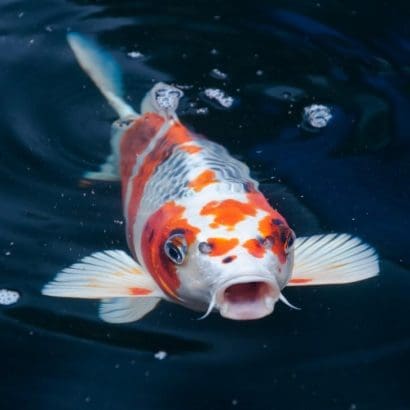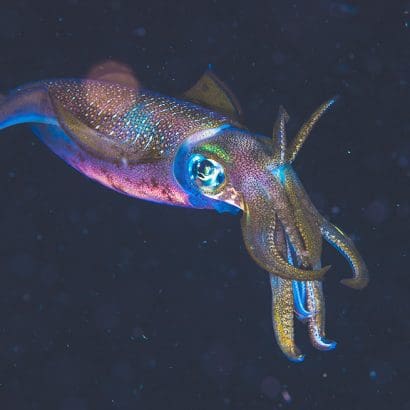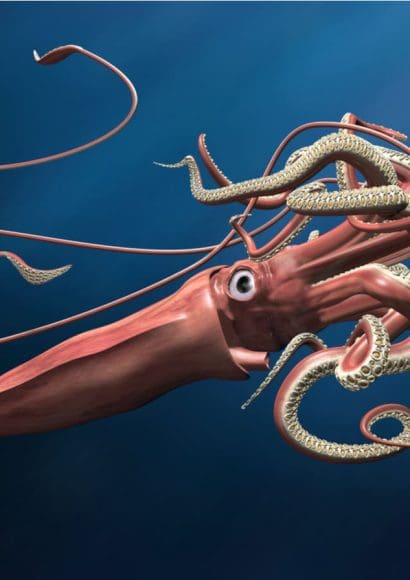
Deep beneath the surface of the vast oceans, a mysterious and captivating creature roams the depths – the giant squid. With its colossal size and elusive nature, the giant squid has long fascinated scientists and captured the imaginations of adventurers and storytellers alike. In this article, we delve into the enigmatic world of these magnificent marine animals and explore their intriguing feeding habits. Prepare to be amazed as we unravel the secrets of these elusive creatures that call the ocean depths their home.
Giant squids, scientifically known as Architeuthis, are renowned for their enormous size, often reaching lengths of up to 43 feet (13 meters) or even more. These behemoths possess a unique appearance with their long, slender bodies and tentacles that can extend far beyond their actual length. Their massive eyes, the largest of any known animal, allow them to navigate the dark depths where sunlight barely penetrates.
Contents
Description of Giant Squids.🦑
Giant squids, also known by their scientific name Architeuthis, are awe-inspiring creatures that inhabit the deep waters of the world’s oceans. These magnificent cephalopods are known for their immense size, making them one of the largest known invertebrates on the planet.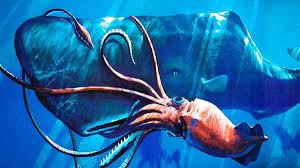
A typical giant squid has a body length that can range from 33 to 43 feet (10 to 13 meters), although some specimens have been recorded to exceed these measurements. They possess a streamlined and muscular body, tapering towards the tail end. Their most notable feature is their long, powerful tentacles, equipped with suckers and even sharp hooks, which they use to capture and subdue their prey.
The skin of a giant squid is typically reddish-brown in color, aiding in camouflage in the deep-sea environment. However, it’s important to note that their coloration can change rapidly, allowing them to adapt to different lighting conditions and blend in with their surroundings.
Behavior and Adaptations:🦑
The behavior and adaptations of giant squids are fascinating and reflect their unique existence in the deep-sea environment. These extraordinary creatures have evolved a range of specialized characteristics to survive and thrive in their challenging habitat.
One of the notable behaviors of giant squids is their elusive and cryptic nature. They are known to be deep-sea dwellers, spending most of their lives in the dark and remote depths of the ocean. This behavior helps them avoid potential predators and increases their chances of surprising their prey. Their ability to remain hidden in the vast expanse of the ocean has contributed to the mystique and intrigue surrounding these enigmatic creatures.
In terms of locomotion, giant squids employ a jet propulsion system. By forcefully expelling water through a funnel-like structure known as a siphon, they are able to propel themselves through the water with remarkable speed and agility. This adaptation allows them to swiftly navigate their deep-sea habitat and pursue prey or escape from potential threats.
Dietary Habits.🦑
The dietary habits of giant squids are a testament to their role as powerful and efficient predators in the deep-sea ecosystem. These colossal creatures have developed specialized feeding strategies to capture and consume their prey in the harsh and challenging environment of the ocean depths.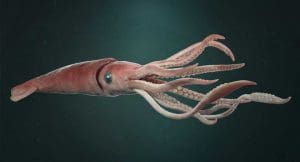
Giant squids are known to be voracious carnivores, feeding primarily on a variety of deep-sea organisms. Their diet consists mainly of fish, such as hake, lanternfish, and other deep-sea species. They are also known to prey on other squid species, including smaller individuals of their own kind.
To capture their prey, giant squids employ a combination of stealth, speed, and their impressive array of appendages. Their long tentacles, armed with powerful suckers and hooks, are used to ensnare and immobilize their prey. Once caught, the prey is drawn toward the squid’s sharp beak, which tears it into smaller, more manageable pieces for consumption.
Interactions with Other Animals.🦑
Giant squids, with their immense size and predatory nature, play a significant role in the complex web of interactions within the marine ecosystem. While they are formidable hunters, they also have interactions with various other animals in their deep-sea environment.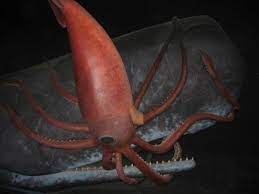
One important interaction of giant squids is their role as both predator and prey. As powerful predators, they can influence the populations of their prey species, such as deep-sea fish and smaller squid. On the other hand, giant squids themselves become targets for other deep-sea predators. They may fall victim to large marine mammals, such as sperm whales, as these colossal cephalopods become a substantial food source for them. These interactions shape the dynamics of the deep-sea food chain, contributing to the overall balance of the ecosystem.
The interactions of giant squids with other animals highlight their significance within the intricate network of relationships in the deep-sea ecosystem. These interactions, from predation to scavenging, contribute to the overall functioning and stability of the marine environment they inhabit.
Curiosities and Interesting Facts.🦑
Exploring the world of giant squids reveals a trove of intriguing curiosities and fascinating facts. For instance, did you know that the eyes of these enigmatic creatures are so massive that they are comparable in size to a basketball? This remarkable adaptation allows them to navigate the darkness of the deep-sea with exceptional visual acuity.

Another captivating aspect is their elusive nature. Despite their immense size, encounters with giant squids in their natural habitat are incredibly rare. They remain shrouded in mystery, their behaviors and reproductive habits largely unknown. The study of these elusive giants continues to unveil new discoveries, captivating the imagination and inspiring further exploration into the secrets of the deep-sea realm.
Through their remarkable adaptations, hunting strategies, and interactions with other marine species, giant squids exemplify the extraordinary diversity and complexity of the ocean’s depths. Unraveling their enigmatic nature not only deepens our understanding of these captivating creatures but also underscores the vast wonders that await exploration beneath the waves.
If you want to know in which countries this marine species is protected, click here.

